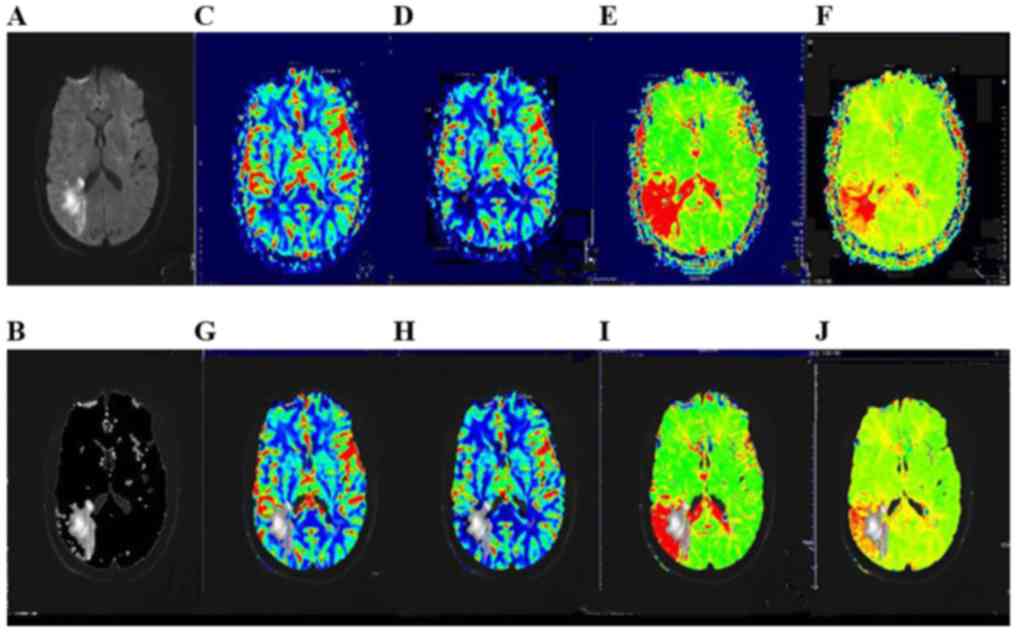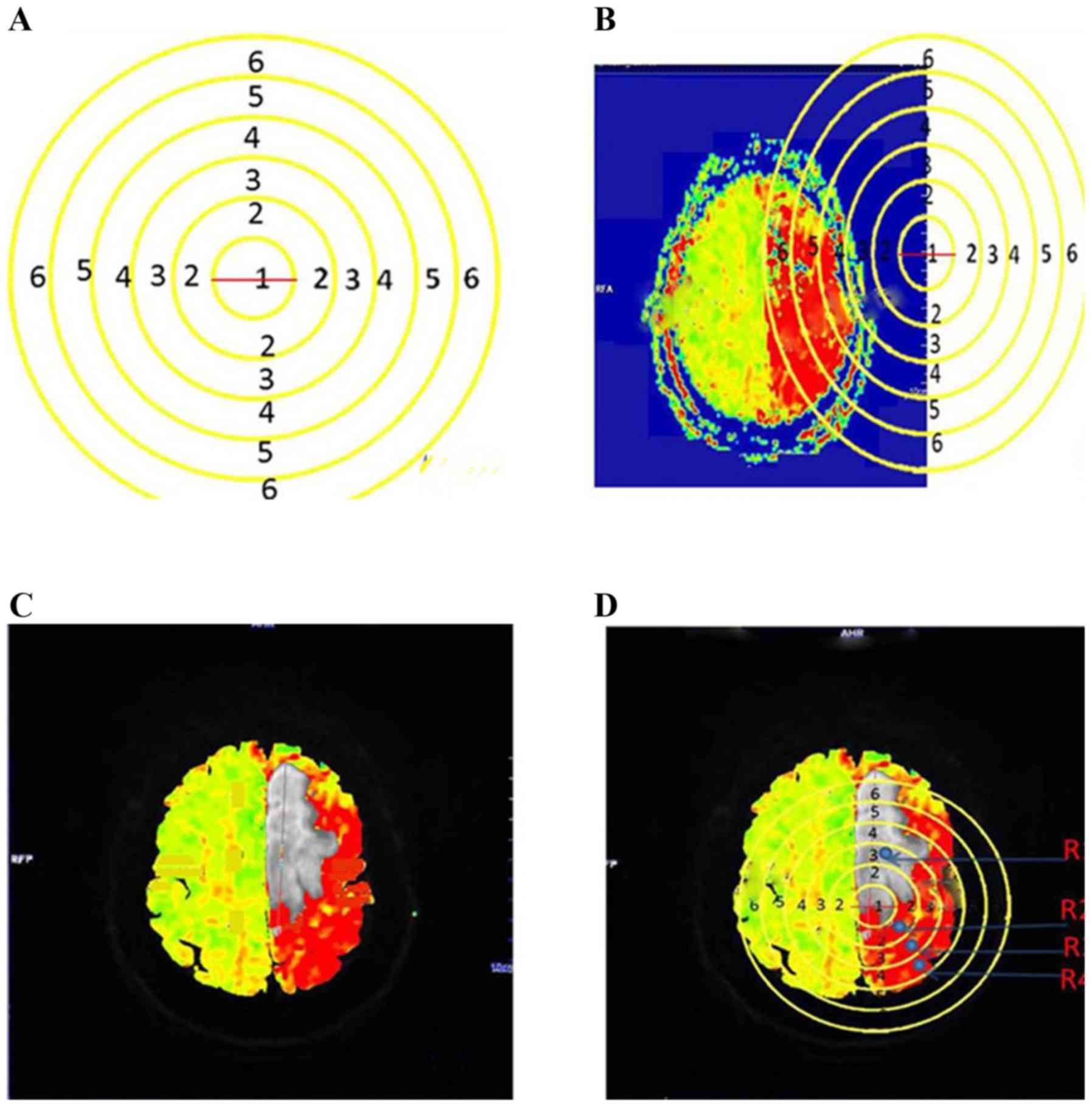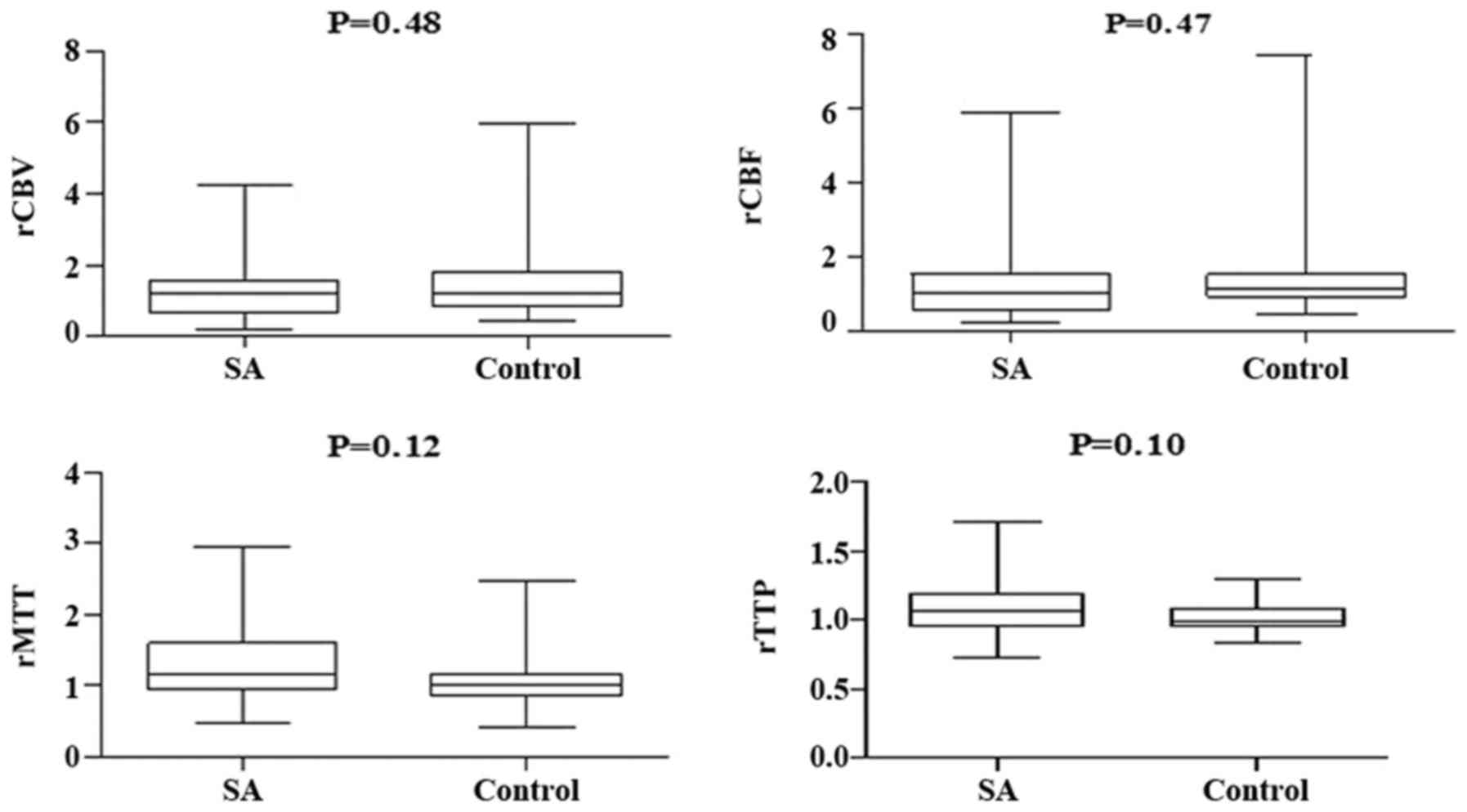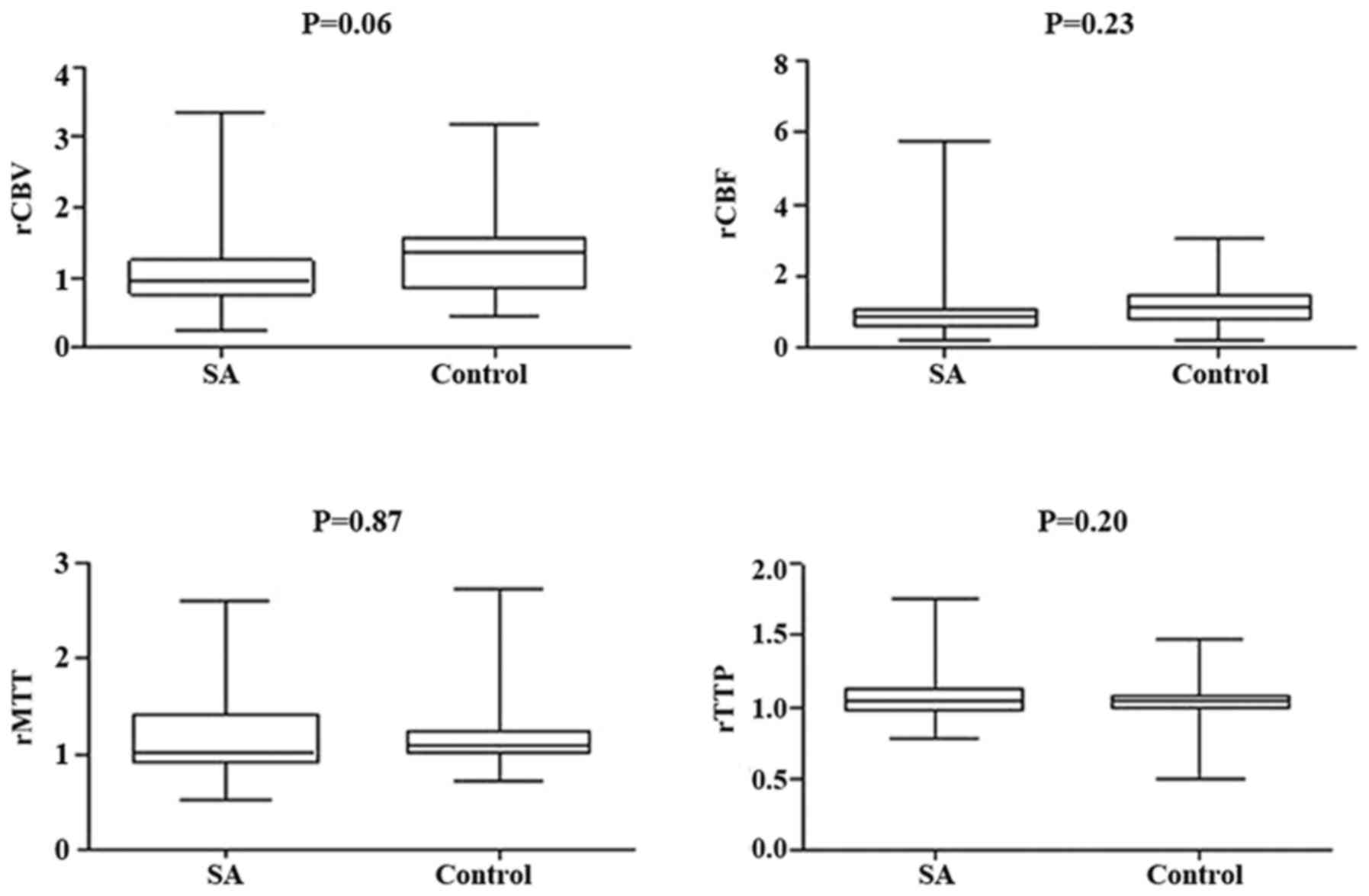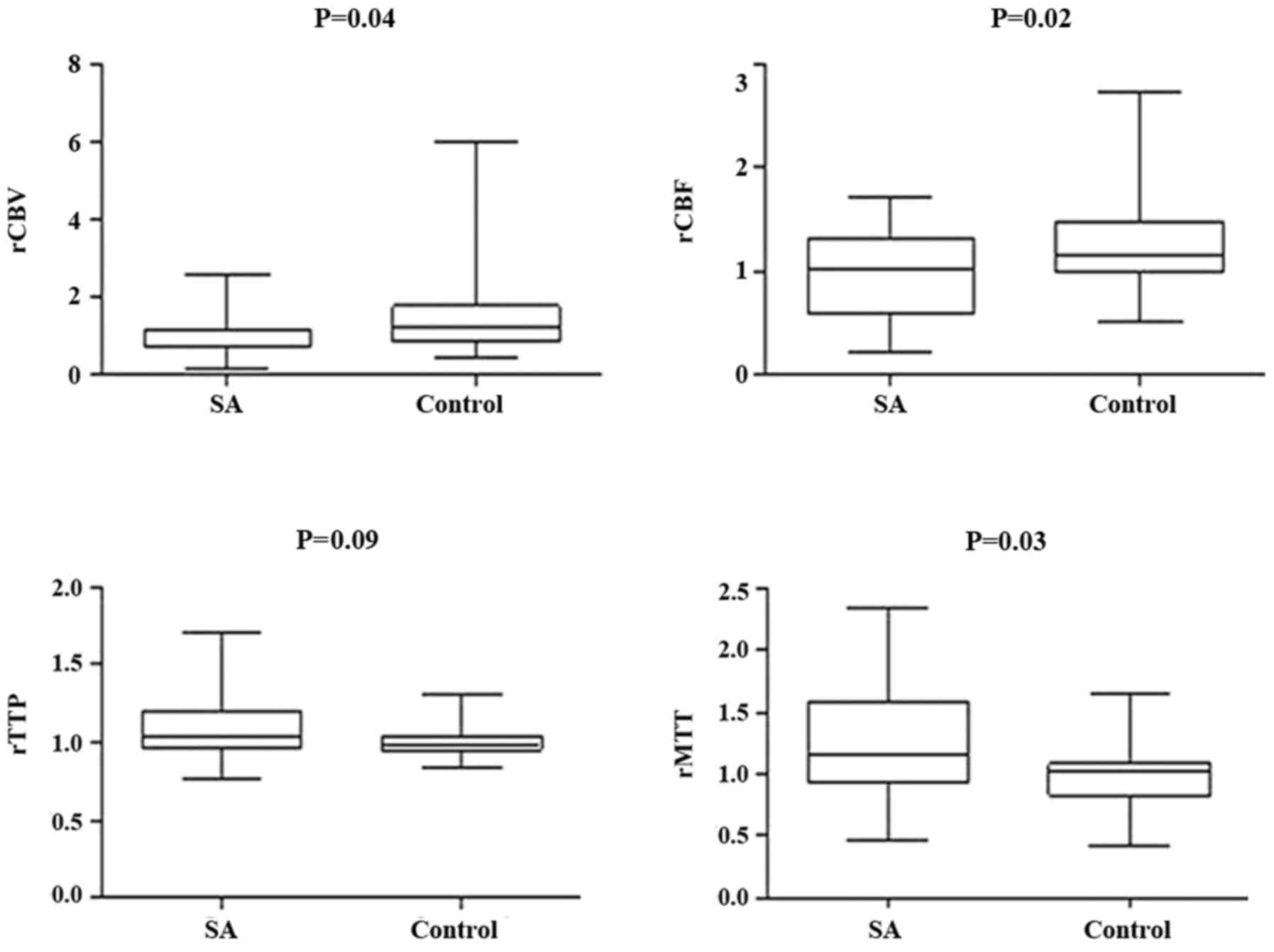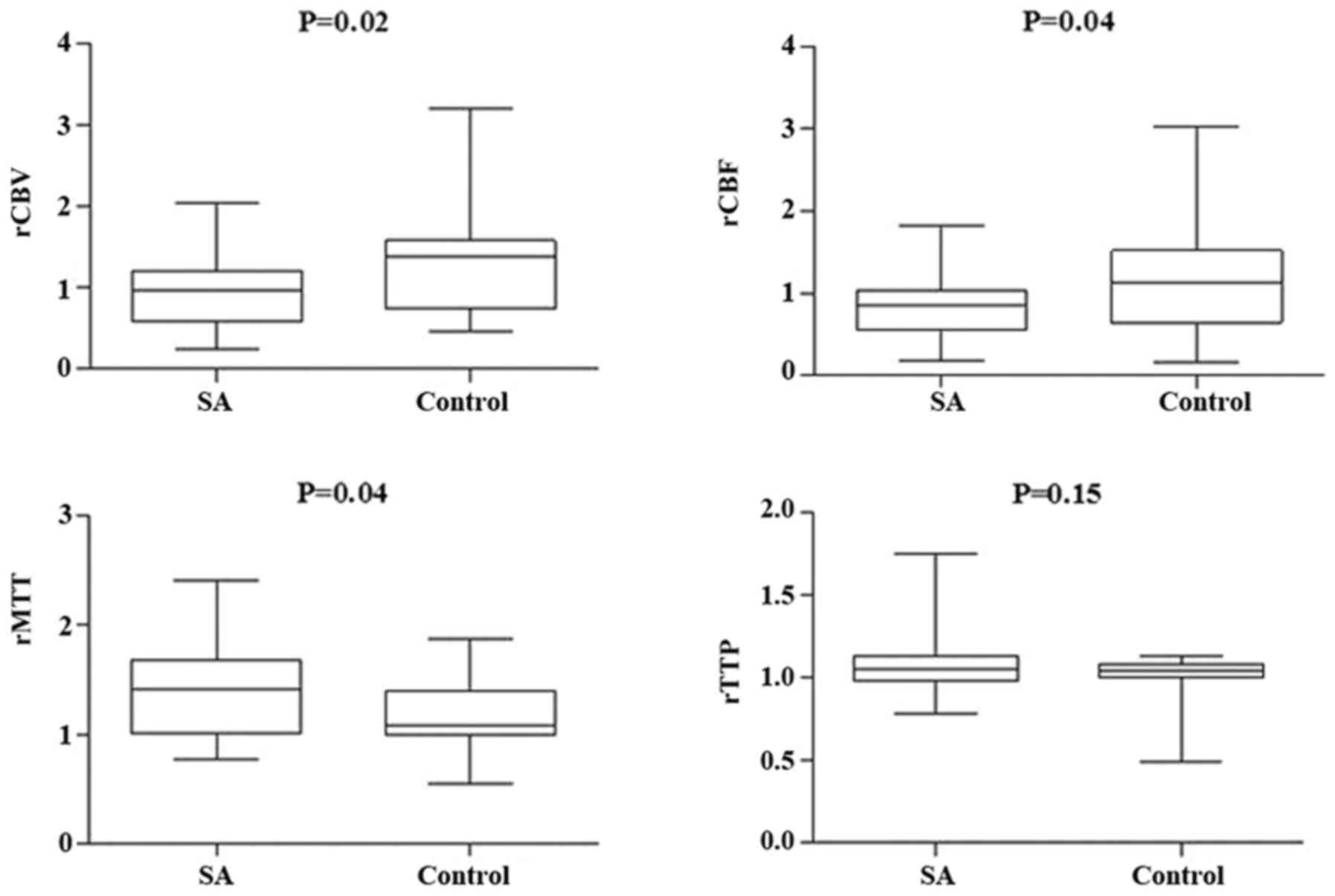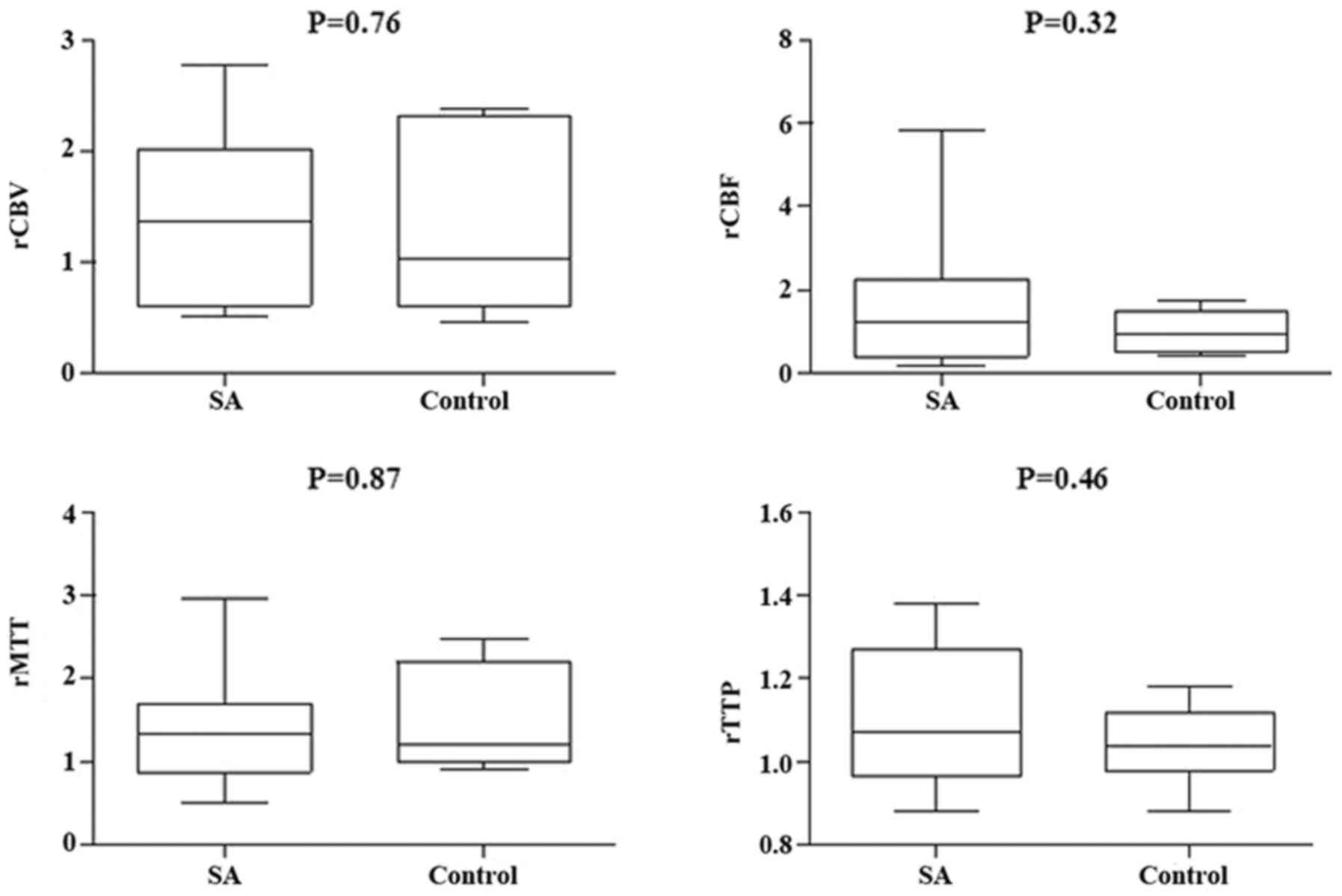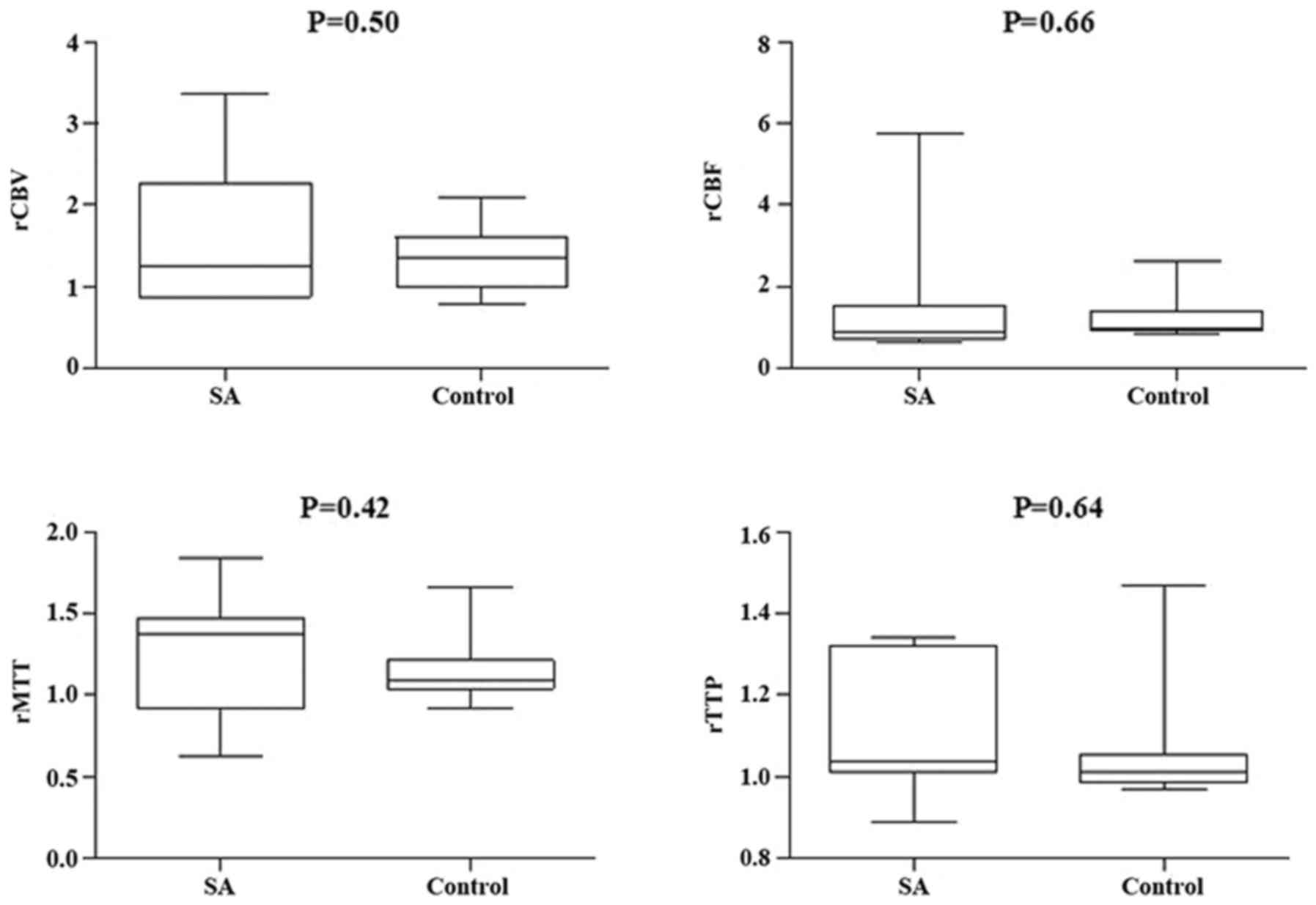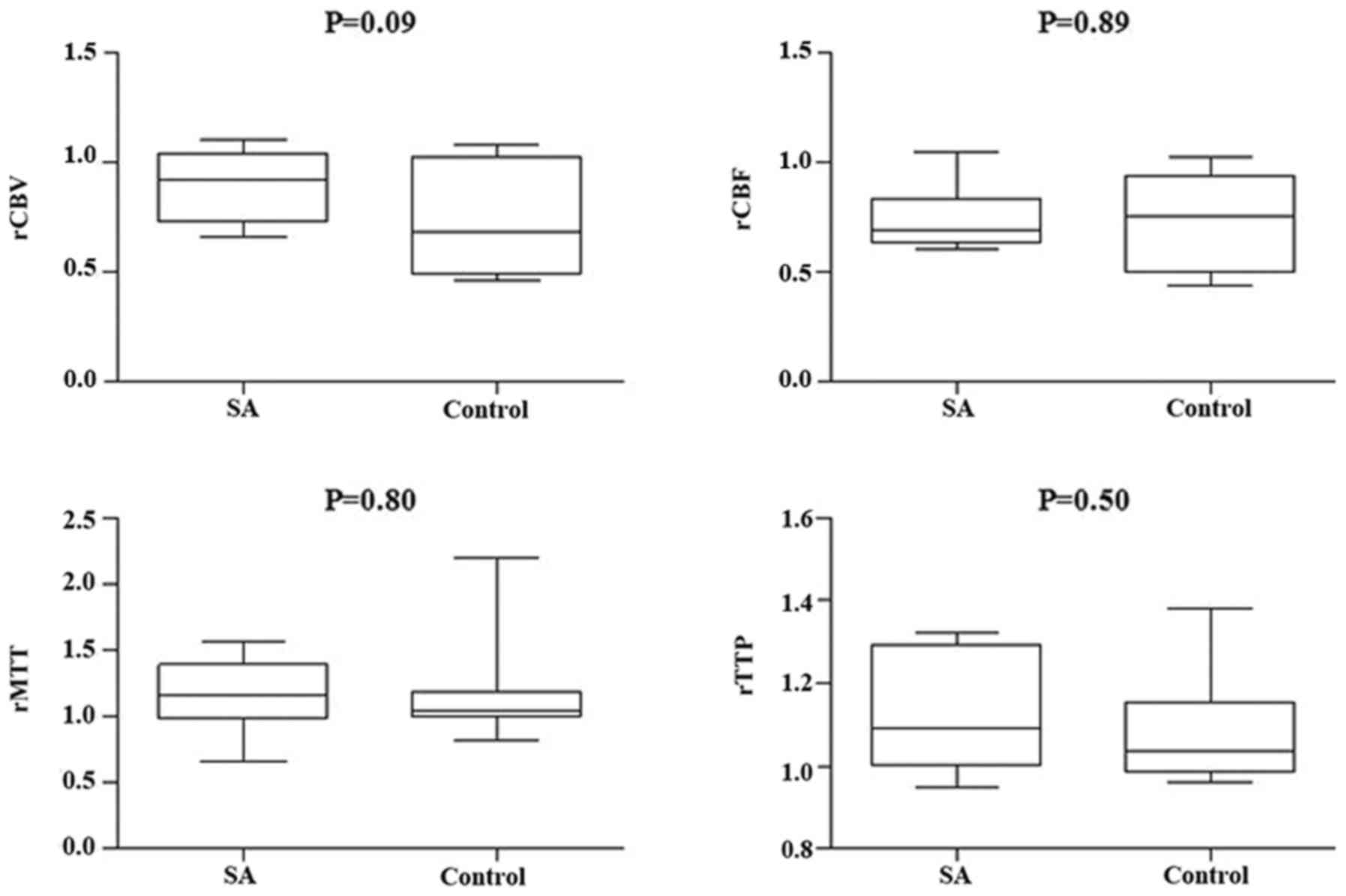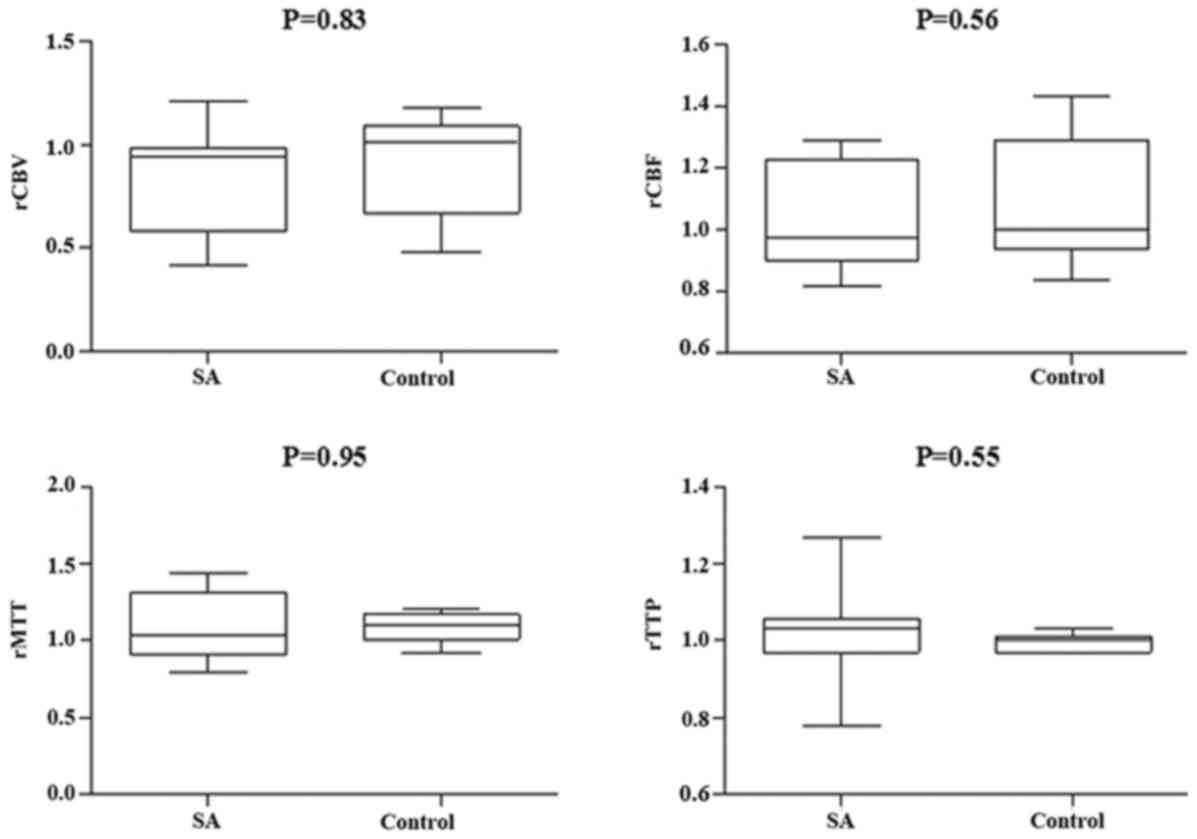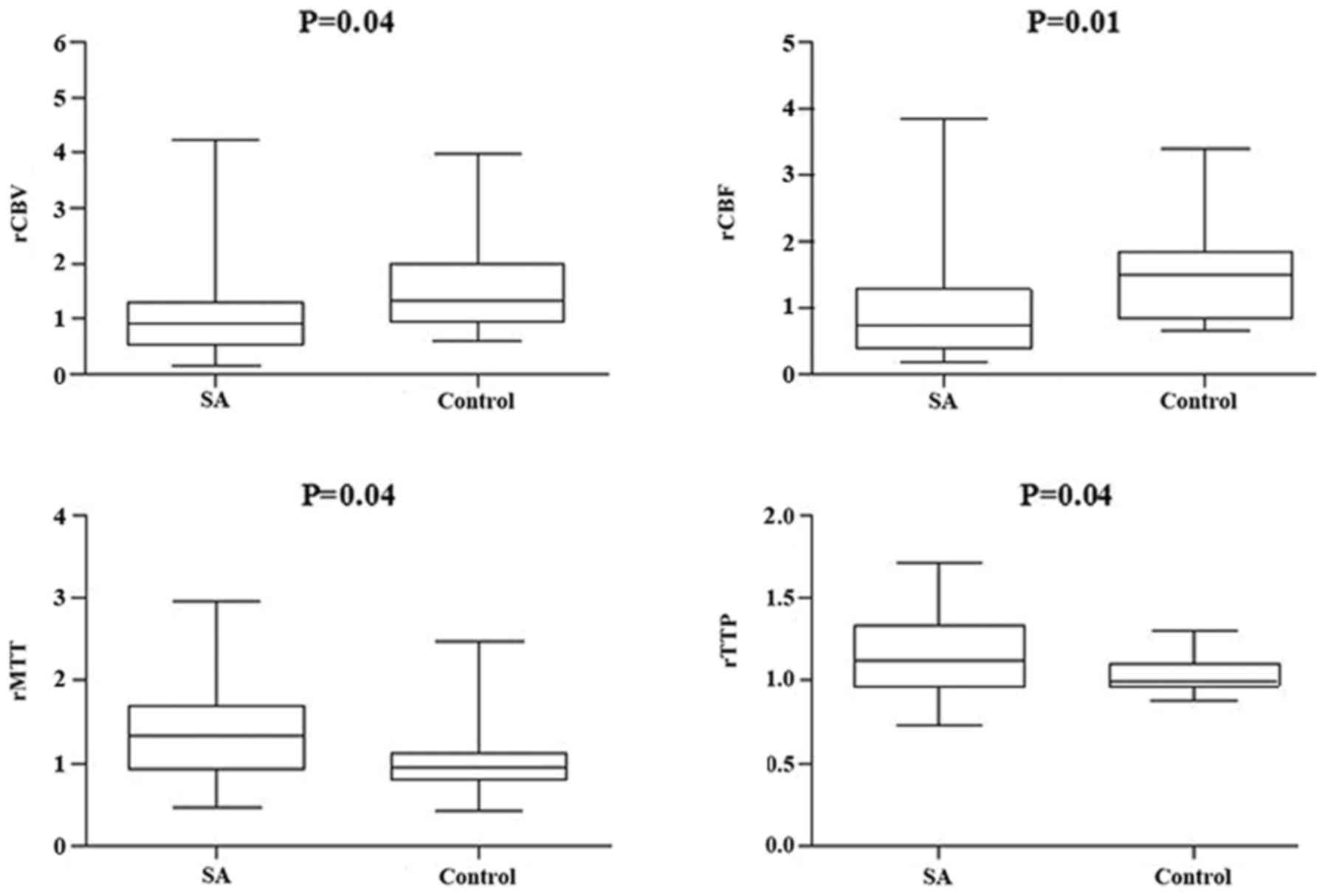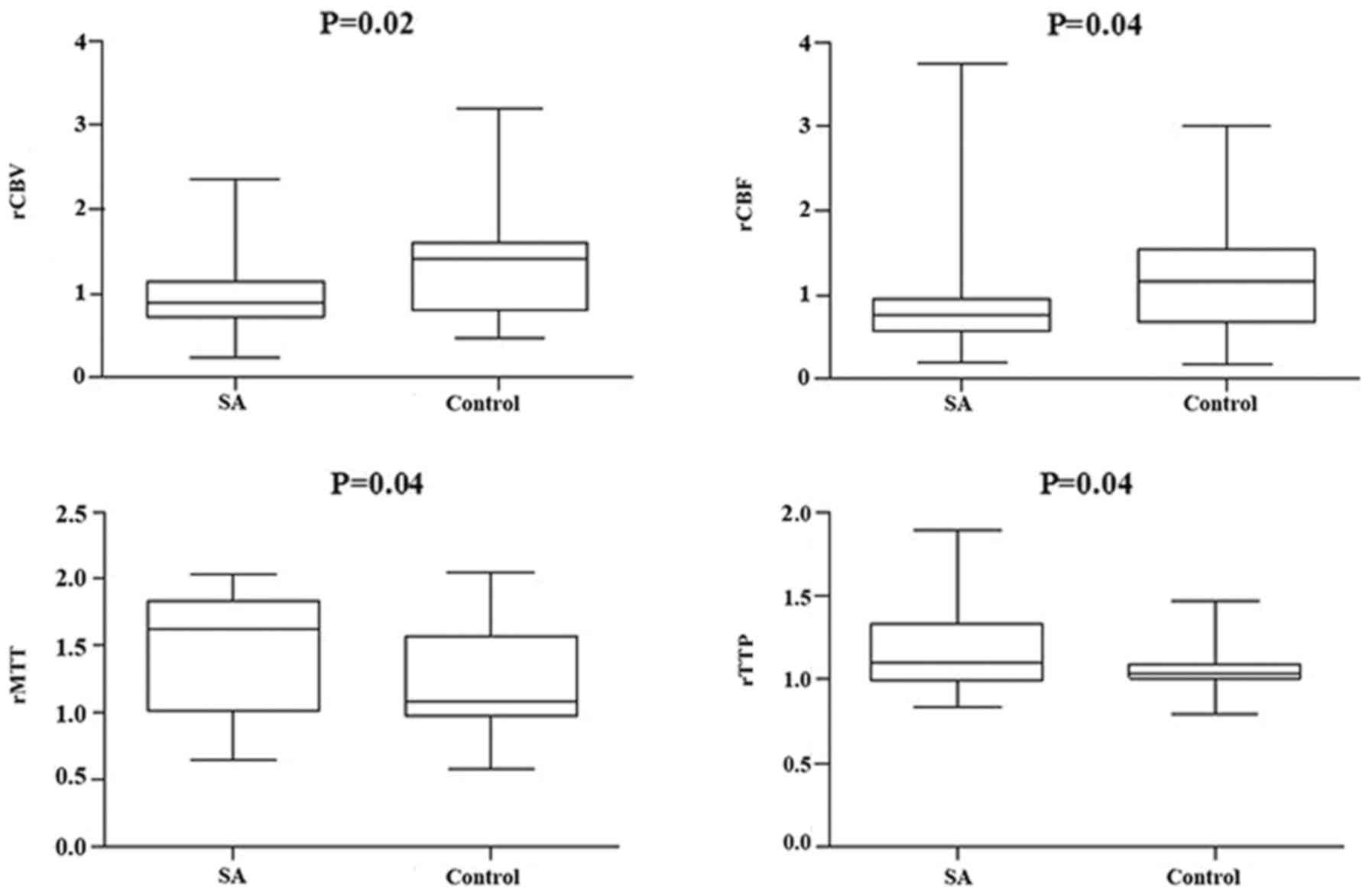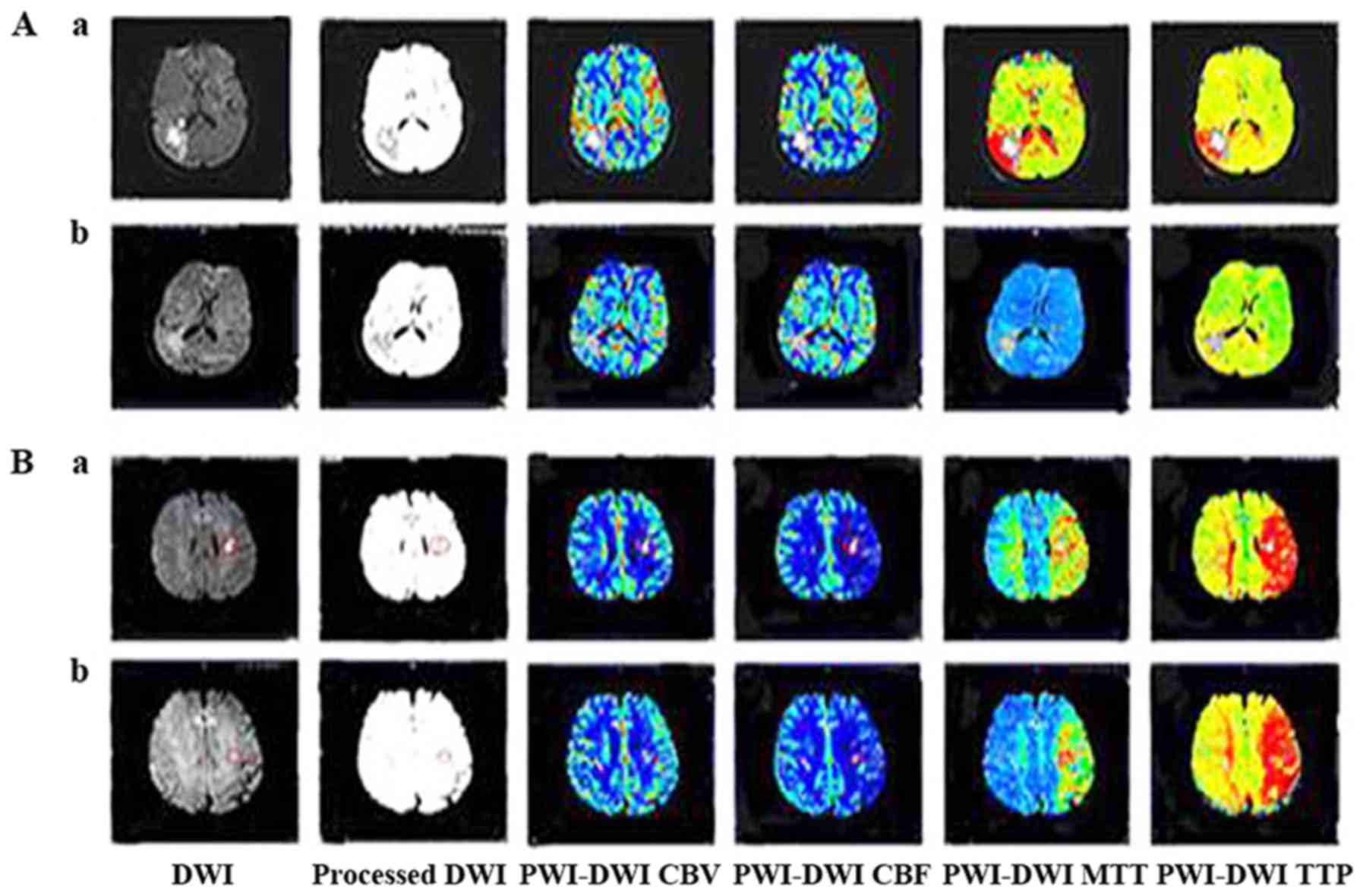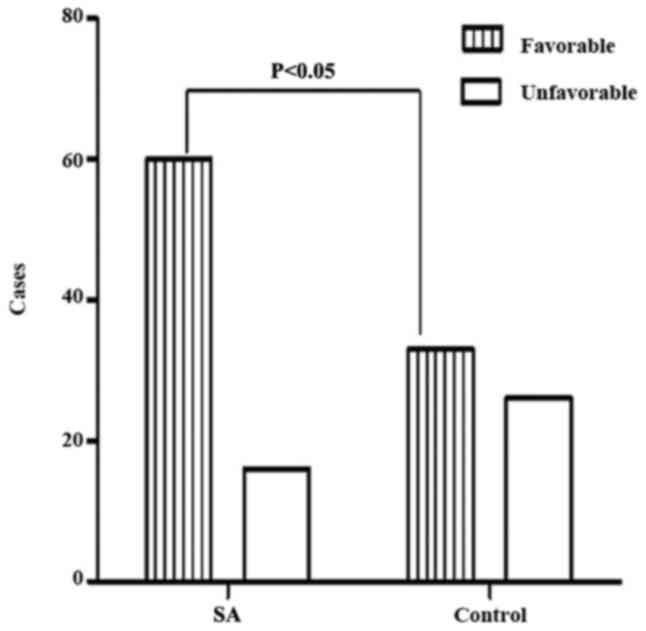|
1
|
Roth GA, Johnson C, Abajobir A, Abd-Allah
F, Abera SF, Abyu G, Ahmed M, Aksut B, Alam T, Alam K, et al:
Global, regional, and national burden of cardiovascular diseases
for 10 causes, 1990-2015. J Am Coll Cardio. 4:1–25. 2017.
View Article : Google Scholar
|
|
2
|
Vagal A, Sanelli P, Sucharew H, Alwell KA,
Khoury JC, Khatri P, Woo D, Flaherty M, Kissela BM, Adeoye O, et
al: Age, sex, and racial differences in neuroimaging use in acute
stroke: A population-based study. AJNR Am J Neuroradiol.
38:1905–1910. 2017. View Article : Google Scholar : PubMed/NCBI
|
|
3
|
Kim AS, Cahill E and Cheng NT: Global
stroke belt: Geographic variation in stroke burden worldwide.
Stroke. 46:3564–3570. 2015. View Article : Google Scholar : PubMed/NCBI
|
|
4
|
Long X, Lou Y, Gu H, Guo X, Wang T, Zhu Y,
Zhao W, Ning X, Li B, Wang J and An Z: Mortality, recurrence, and
dependency rates are higher after acute ischemic stroke in elderly
patients with diabetes compared to younger patients. Front Aging
Neurosci. 8:1422016. View Article : Google Scholar : PubMed/NCBI
|
|
5
|
Gan Y, Wu J, Zhang S, Li L, Yin X, Gong Y,
Herath C, Mkandawire N, Zhou Y, Song X, et al: Prevalence and risk
factors associated with stroke in middle-aged and older Chinese: A
community-based cross-sectional study. Sci Rep. 7:95012017.
View Article : Google Scholar : PubMed/NCBI
|
|
6
|
Motyer R, Asadi H, Thornton J, Nicholson P
and Kok HK: Current evidence for endovascular therapy in stroke and
remaining uncertainties. J Intern Med. 283:2–15. 2018. View Article : Google Scholar : PubMed/NCBI
|
|
7
|
Wey HY, Desai VR and Duong TQ: A review of
current imaging methods used in stroke research. Neurological Res.
35:1092–1102. 2013. View Article : Google Scholar
|
|
8
|
An H, Ford AL, Eldeniz C, Chen Y, Vo KD,
Zhu H, Powers WJ, Lin W and Lee JM: Reperfusion beyond 6 hours
reduces infarct probability in moderately ischemic brain tissue.
Stroke. 47:99–105. 2016. View Article : Google Scholar : PubMed/NCBI
|
|
9
|
Mishra NK, Albers GW, Davis SM, Donnan GA,
Furlan AJ, Hacke W and Lees KR: Mismatch-based delayed
thrombolysis: A meta-analysis. Stroke. 41:e25–e33. 2010. View Article : Google Scholar : PubMed/NCBI
|
|
10
|
Albers GW: Expanding the window for
thrombolytic therapy in acute stroke. The potential role of acute
MRI for patient selection. Stroke. 30:2230–2237. 1999. View Article : Google Scholar : PubMed/NCBI
|
|
11
|
Kim SJ, Seok JM, Bang OY, Kim GM, Kim KH,
Jeon P, Chung CS, Lee KH, Alger JR and Liebeskind DS: MR mismatch
profiles in patients with intracranial atherosclerotic stroke: A
comprehensive approach comparing stroke subtypes. J Cereb Blood
Flow Metab. 29:1138–1145. 2009. View Article : Google Scholar : PubMed/NCBI
|
|
12
|
Neumann-Haefelin T, Wittsack HJ, Wenserski
F, Siebler M, Seitz RJ, Mödder U and Freund HJ: Diffusion- and
perfusion-weighted MRI. The DWI/PWI mismatch region in acute
stroke. Stroke. 30:1591–1597. 1999. View Article : Google Scholar : PubMed/NCBI
|
|
13
|
Galinovic I, Ostwaldt AC, Soemmer C, Bros
H, Hotter B, Brunecker P, Schmidt WU, Jungehülsing J and Fiebach
JB: Search for a Map and threshold in perfusion MRI to accurately
predict tissue fate: A protocol for assessing lesion growth in
patients with persistent vessel occlusion. Cerebrrovasc Dis.
32:186–193. 2011. View Article : Google Scholar
|
|
14
|
Mishra NK, Albers GW, Christensen S, Marks
M, Hamilton S, Straka M, Liggins JT, Kemp S, Mlynash M, Bammer R,
et al: Comparison of magnetic resonance imaging mismatch criteria
to select patients for endovascular stroke therapy. Stroke.
45:1369–1374. 2014. View Article : Google Scholar : PubMed/NCBI
|
|
15
|
Prabhakaran S, Ruff I and Bernstein RA:
Acute stroke intervention: A systematic review. JAMA.
313:1451–1462. 2015. View Article : Google Scholar : PubMed/NCBI
|
|
16
|
Davis S, Campbell B, Christensen S, Ma H,
Desmond P, Parsons M, Levi C, Bladin C, Barber PA and Donnan G:
Perfusion/Diffusion mismatch is valid and should be used for
selecting delayed interventions. Transl Stroke Res. 3:188–197.
2012. View Article : Google Scholar : PubMed/NCBI
|
|
17
|
Sun K, Fan J and Han J: Ameliorating
effects of traditional Chinese medicine preparation, Chinese
materia medica and active compounds on ischemia/reperfusion induced
cerebral microcirculatory disturbances and neuron damage. Acta
Pharm Sin B. 5:8–24. 2015. View Article : Google Scholar : PubMed/NCBI
|
|
18
|
Chien MY, Chuang CH, Chern CM, Liou KT,
Liu DZ, Hou YC and Shen YC: Salvianolic acid A alleviates ischemic
brain injury through the inhibition of inflammation and apoptosis
and the promotion of neurogenesis in mice. Free Radic Biol Med.
99:508–519. 2016. View Article : Google Scholar : PubMed/NCBI
|
|
19
|
Zhuang P, Wan Y, Geng S, He Y, Feng B, Ye
Z, Zhou D, Li D, Wei H, Li H, et al: Salvianolic acids for
injection (SAFI) suppresses inflammatory responses in activated
microglia to attenuate brain damage in focal cerebral ischemia. J
Ethnopharmacol. 198:194–204. 2017. View Article : Google Scholar : PubMed/NCBI
|
|
20
|
Feng SQ, Aa N, Geng JL, Huang JQ, Sun RB,
Ge C, Yang ZJ, Wang LS, Aa JY and Wang GJ: Pharmacokinetic and
metabolomic analyses of the neuroprotective effects of salvianolic
acid A in a rat ischemic stroke model. Acta Pharmacol Sin.
38:1435–1444. 2017. View Article : Google Scholar : PubMed/NCBI
|
|
21
|
Murphy S, Thomas NJ, Gertz SJ, Beca J,
Luther JF, Bell MJ, Wisniewski SR, Hartman AL and Tasker RC:
Tripartite stratification of the Glasgow coma scale in children
with severe traumatic brain injury and mortality: An analysis from
a multi-center comparative effectiveness study. J Neurotrauma. Feb
27–2017. View Article : Google Scholar : PubMed/NCBI
|
|
22
|
Stefanovic Budimkic M, Pekmezovic T,
Beslac-Bumbasirevic L, Ercegovac M, Berisavac I, Stanarcevic P,
Padjen V and Jovanović DR: Long-term prognosis in ischemic stroke
patients treated with intravenous thrombolytic therapy. J Stroke
Cerebrovasc Dis. 26:196–203. 2017. View Article : Google Scholar : PubMed/NCBI
|
|
23
|
Suwanwela NC, Chutinet A, Mayotarn S,
Thanapiyachaikul R, Chaisinanunkul N, Asawavichienjinda T,
Muengtaweepongsa S, Nilanont Y, Samajarn J, Watcharasaksilp K, et
al: A randomized controlled study of intravenous fluid in acute
ischemic stroke. Clin Neurol Neurosurg. 161:98–103. 2017.
View Article : Google Scholar : PubMed/NCBI
|
|
24
|
Siemonsen S, Fitting T, Thomalla G,
Krutzelmann A and Fiehler J: Visual assessment of magnetic
resonance imaging perfusion lesions in a large patient group. Clin
Neuroradiol. 22:305–313. 2012. View Article : Google Scholar : PubMed/NCBI
|
|
25
|
Østergaard L: Principles of cerebral
perfusion imaging by bolus tracking. J Magn Reson Imaging.
22:710–717. 2005. View Article : Google Scholar : PubMed/NCBI
|
|
26
|
Robertson CA, McCabe C, Gallagher L,
Lopez-Gonzalez Mdel R, Holmes WM, Condon B, Muir KW, Santosh C and
Macrae IM: Stroke penumbra defined by an MRI-based oxygen challenge
technique: 1. Validation using [14C]2-deoxyglucose autoradiography.
J Cere Blood Flow Metab. 31:1778–1787. 2011. View Article : Google Scholar
|
|
27
|
The National Institute of Neurological
Disorders and Stroke rt-PA Stroke Study Group, : Tissue plasminogen
activator for acute ischemic stroke. N Engl J Med. 333:1581–1587.
1995. View Article : Google Scholar : PubMed/NCBI
|
|
28
|
Ciccone A, Valvassori L, Ponzio M,
Ballabio E, Gasparotti R, Sessa M, Scomazzoni F, Tiraboschi P and
Sterzi R; SYNTHESIS Investigators, : Intra-arterial or intravenous
thrombolysis for acute ischemic stroke? J Neurointerv Surg.
2:74–79. 2010. View Article : Google Scholar : PubMed/NCBI
|
|
29
|
Berkhemer OA, Fransen PS, Beumer D, van
den Berg LA, Lingsma HF, Yoo AJ, Schonewille WJ, Vos JA, Nederkoorn
PJ, Wermer MJ, et al: A randomized trial of intra-arterial
treatment for acute ischemic stroke. N Engl J Med. 372:11–20. 2015.
View Article : Google Scholar : PubMed/NCBI
|
|
30
|
Goyal M, Demchuk AM, Menon BK, Eesa M,
Rempel JL, Thornton J, Roy D, Jovin TG, Willinsky RA, Sapkota BL,
et al: Randomized assessment of rapid endovascular treatment of
ischemic stroke. N Engl J Med. 372:1019–1030. 2015. View Article : Google Scholar : PubMed/NCBI
|
|
31
|
Campbell BC, Mitchell PJ, Kleinig TJ,
Dewey HM, Churilov L, Yassi N, Yan B, Dowling RJ, Parsons MW, Oxley
TJ, et al: Endovascular therapy for ischemic stroke with
perfusion-imaging selection. N Engl J Med. 372:1009–1018. 2015.
View Article : Google Scholar : PubMed/NCBI
|
|
32
|
Saver JL, Goyal M, Bonafe A, Diener HC,
Levy EI, Pereira VM, Albers GW, Cognard C, Cohen DJ, Hacke W, et
al: : Solitaire TM with the intention for thrombectomy
as primary endovascular treatment for acute ischemic stroke stroke
(SWIFT PRIME) trial: Protocol for a randomized, controlled,
multicenter study comparing the Solitaire revascularization device
with IV tPA with IV tPA alone in acute ischemic stroke. Int J
Stroke. 10:439–448. 2015. View Article : Google Scholar : PubMed/NCBI
|
|
33
|
Schwamm LH, Ali SF, Reeves MJ, Smith EE,
Saver JL, Messe S, Bhatt DL, Grau-Sepulveda MV, Peterson ED and
Fonarow GC: Temporal trends in patient characteristics and
treatment with intravenous thrombolysis among acute ischemic stroke
patients at Get with the Guidelines-Stroke hospitals. Circ
Cardiovasc Qual Outcomes. 6:543–549. 2013. View Article : Google Scholar : PubMed/NCBI
|
|
34
|
Menon BK, Saver JL, Goyal M, Nogueira R,
Prabhakaran S, Liang L, Xian Y, Hernandez AF, Fonarow GC, Schwamm L
and Smith EE: Trends in endovascular therapy and clinical outcomes
within the nationwide get with the guidelines-stroke registry.
Stroke. 46:989–995. 2015. View Article : Google Scholar : PubMed/NCBI
|
|
35
|
Fujioka M, Okuchi K, Iwamura A, Taoka T
and Siesjö BK: A mismatch between the abnormalities in diffusion-
and susceptibility-weighted magnetic resonance imaging may
represent an acute ischemic penumbra with misery perfusion. J
Stroke Cerebrovasc Dis. 22:1428–1431. 2013. View Article : Google Scholar : PubMed/NCBI
|
|
36
|
Gersing AS, Ankenbrank M, Schwaiger BJ,
Toth V, Janssen I, Kooijman H, Wunderlich S, Bauer JS, Zimmer C and
Preibisch C: Mapping of cerebral metabolic rate of oxygen using
dynamic susceptibility contrast and blood oxygen level dependent MR
imaging in acute ischemic stroke. Neuroradio. 57:1253–1261. 2015.
View Article : Google Scholar
|
|
37
|
Baron JC, Bousser MG, Rey A, Guillard A,
Comar D and Castaigne P: Reversal of focal ‘misery-perfusion
syndrome’ by extra-intracranial arterial bypass in hemodynamic
cerebral ischemia. A caes study with 15O positron emission
tomography. Stroke. 12:454–459. 1981. View Article : Google Scholar : PubMed/NCBI
|
|
38
|
Heiss WD: The ischemic penumbra:
Correlates in imaging and implications for treatment of ischemic
stroke. The Johann Jacob Wepfer award 2011. Cerebrovasc Dis.
32:307–320. 2011. View Article : Google Scholar : PubMed/NCBI
|
|
39
|
Mokin M, Morr S, Fanous AA, Shallwani H,
Natarajan SK, Levy EI, Snyder KV and Siddiqui AH: Correlation
between cerebral blood volume values and outcomes in endovascular
therapy for acute ischemic stroke. J NeuroInterv Surg. 7:705–708.
2015. View Article : Google Scholar : PubMed/NCBI
|
|
40
|
Ren DC, Du GH and Zhang JT: Inhibitory
effect of salvianolic acids on endothelial cells damage induced by
hydrogen peroxide. Chin J Pharmacol Toxicol. 17:333–337. 2003.
|
|
41
|
Tang H, Pan CS, Mao XW, Liu YY, Yan L,
Zhou CM, Fan JY, Zhang SY and Han JY: Role of NADPH oxidase in
total salvianolic acid injection attenuating ischemia-reperfusion
impaired cerebral microcirculation and neurons: Implication of
AMPK/AKt/PKC. Microcirculation. 21:615–627. 2014. View Article : Google Scholar : PubMed/NCBI
|
|
42
|
Chen YH, Du GH and Zhang JT: Salvianolic
acid B protects brain against injuries caused by
ischemia-reperfusion in rats. Acta Pharmacol Sin. 21:463–466.
2000.PubMed/NCBI
|
|
43
|
Hou S, Zhao MM, Shen PP, Liu XP, Sun Y and
Feng JC: Neuroprotective effect of salvianolic acids against
cerebral ischemia/reperfusion injury. Int J Mol Sci. 17(pii):
E11902016. View Article : Google Scholar : PubMed/NCBI
|
|
44
|
Knash M, Tsang A, Hameed B, Saini M,
Jeerakathil T, Beaulieu C, Emery D and Butcher K: Low cerebral
blood volume is predictive of diffusion restriction only in
hypeeracute stroke. Stroke. 41:2795–2800. 2010. View Article : Google Scholar : PubMed/NCBI
|
|
45
|
Liu Y, Peng JW and Yu LF: Changes of
cerebral perfusion and potential targets for intervention in acute
ischemic stroke. Chin J Pract Nerv Dis. 20:11–16. 2017.(In
Chinese).
|















